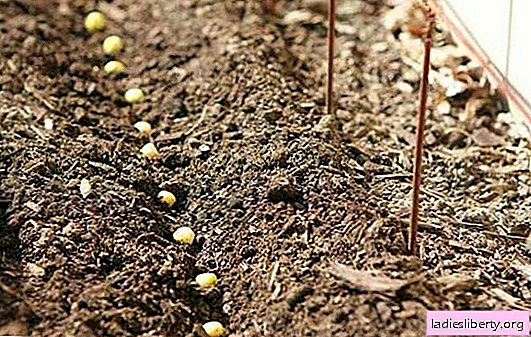
The genus of Phlox (Phlox) from the family Sinyuhovye (Polemoniaceae) is represented by approximately 50 species of perennial plants and one annual (Phlox Drummond). The birthplace of these flowers is North America. From Greek, the name of the phlox flower is translated as “flame”; it was given to the plant by Carl Linnaeus because of the fiery red flowers of wild phloxes.
First of all, phlox attract gardeners with their ease of cultivation, unpretentiousness, long flowering and varied color of flowers, which can be the most incredible shades. Due to its decorative and unpretentious nature, this perennial is one of the most popular in the whole world. Today, more than 1,500 varieties of these lovely fragrant flowers are known.
All phloxes are represented by bushy erect species, reaching a height of 30 to 180 cm, and creeping undersized species, 5–25 cm high. Depending on the flowering time, phloxes are spring, summer and summer-autumn. Thus, due to the diverse size of the bush and the different flowering periods, you can create very beautiful compositions in your garden that delight you with their fragrant bright flowering from early spring to autumn.
Phlox - growing and care
The most successful phlox can be grown in a sheltered from the wind, light or semi-shady place with loose fertile soil and sufficient moisture. The soil under the spring planting of phlox should be prepared in the fall. Having processed it to a depth of 30 cm, compost, superphosphate, wood ash should be added to it. Lime is added to acidic soil. For heavy clay soils, the addition of sand (1-2 buckets per square meter) and organic fertilizers, such as manure and peat, is mandatory.
Phlox is a hygrophilous plant, however, in waterlogged areas with a high standing groundwater, their successful breeding is impossible.
Phlox care also includes loosening the soil, which is carried out about 6-8 times. When loosening in the second half of the growing season, it is recommended to carry out the hilling of plants to accelerate the formation of the root system.
Phlox need fertilizing with mineral and organic fertilizers. The first feeding is carried out in the second half of May. For her, they take manure diluted in water in a ratio of 1:15, or saltpeter (up to 25 grams per bucket of water). The second top dressing is carried out at the beginning of June with the same fertilizers, to which superphosphate or potassium salt is added. The third top dressing is also carried out in early July, but without nitrogen fertilizers. And, finally, the fourth top dressing, phosphorus and potassium salt, is carried out at the end of July.
Phlox - transplantation and reproduction
Phlox transplantation is recommended every 4-6 years. However, provided that the flowers are provided with sufficient nutrients, they can successfully grow in one place for up to 10 years. When transplanting, you should take the distance between the bushes from 35 cm to 45 cm for low-growing varieties and from 50 cm to 60 cm for tall. The best time for a transplant is the second half of April or the first half of May. Autumn planting should be completed before mid-August. In the fall, phloxes are planted, having previously cut off the aerial part. If they underwent division, then in such bushes the height of the stored stems should be no more than 25 cm, this is necessary for their good rooting. After planting, plants should be watered daily. For a summer transplant, you should take phlox with a lump of earth, without dividing their root system.
The most common method of phlox propagation is vegetative (dividing the bush, stem cuttings, leaf cuttings with axillary buds, etc.). It allows you to save varietal differences of the plant, which cannot be achieved with seed propagation.
The most popular vegetative method of propagating phlox is the division of the bush. This is usually done in early spring. After digging it out of the soil and freeing it from the ground, carefully spread the root necks and root system and carefully separate the bush, with your hands or a knife. On the detachable part there should be at least 3-4 growth buds and 5 b root siblings. The division of the bush can be done in the fall, after the termination of growth processes and before frost, so that the plant successfully takes root and tolerates wintering well.
Phlox propagation by cuttings is carried out in May-June, then they quickly take root. To do this, cut off young shoots from the bush and cut pieces from them with two pairs of leaves, making a lower cut under the lower leaves and removing leaf blades. The top cut should be 1 cm above the top leaves, which should be cut in half. Having placed the cuttings in moist soil, they are covered with banks, shaded and watered 2-3 times a day until completely rooted.
Phlox - diseases and pests
Subject to the rules of agricultural technology and good care, phlox is quite resistant to diseases and pests. However, errors in care lead to various painful conditions of plants and the loss of their decorativeness.
So, when grown in the shade and lack of nutrients, phlox can become infected with powdery mildew, rust, white spotting, verticillous wilting, variegation, mosaic, chopping leaves.
The phlox stem nematode, which is manifested by the invasion of microscopic worms invisible to the naked eye, is very harmful to these flowers. Having wintered in the rhizome, soil, plant debris, in the spring they settle in the stems and leaves. You can recognize their presence by the pale twisted tops of shoots and thinned leaves. Having found plants with such signs, they should be immediately excavated with a large lump of earth and removed from the site.
However, with good care all of these difficulties can be easily avoided. And then in May, phloxes awl-shaped and spread wide in your area; in June Drummond's phloxes burn with scarlet flowers, which will bloom until autumn; from mid-summer to fall, phlox panicled and spotted will delight the eye, that is, for several months a year your garden will be filled with lush color and wonderful aroma of these amazing colors.











